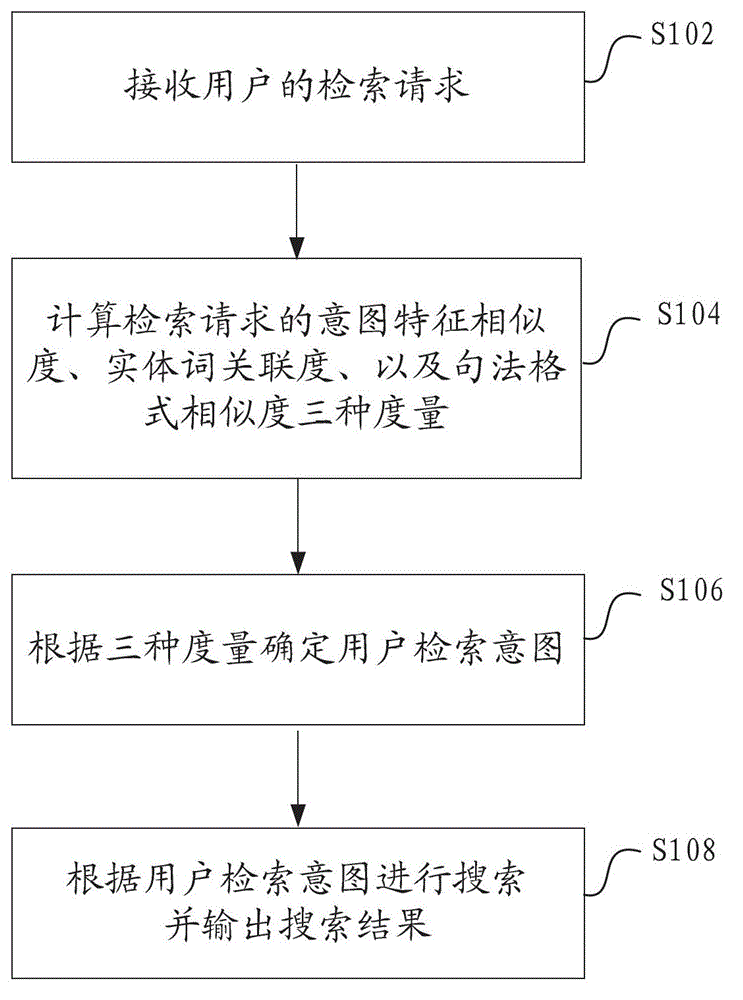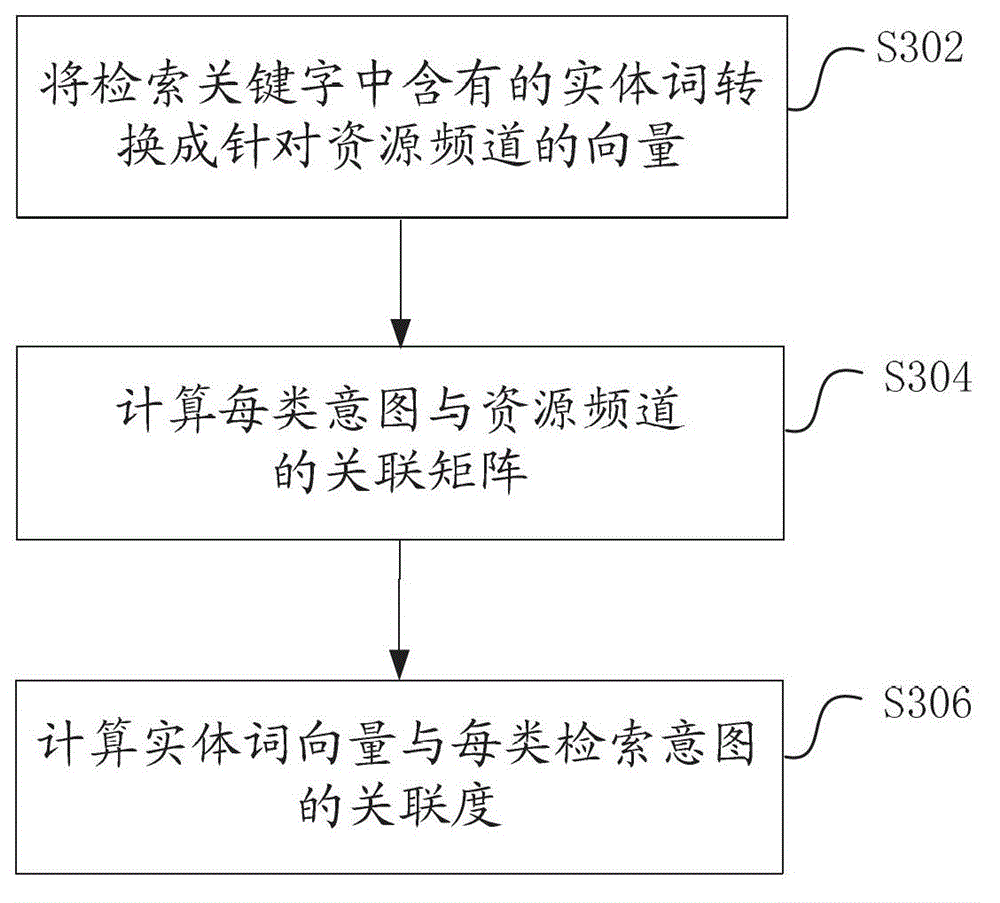Searching method and system for identifying user retrieval intention
A search method and intent technology, applied in the field of information retrieval, can solve the problems of high load, unable to give intent results, different part-of-speech distribution, etc., and achieve the effect of easy implementation.
- Summary
- Abstract
- Description
- Claims
- Application Information
AI Technical Summary
Problems solved by technology
Method used
Image
Examples
Embodiment 1
[0032] Such as figure 1 Shown is a flow chart of a search method for identifying user retrieval intentions provided by an embodiment of the present invention, in the figure:
[0033] S102. Receive a retrieval request from a user;
[0034] S104. Calculating three metrics of the retrieval request, the similarity of intent features, the degree of entity word association, and the similarity of syntax format;
[0035]Preferably, calculating the similarity of the intent features of the retrieval request in this step may be: performing word segmentation processing on the retrieval keywords of the retrieval request to obtain a retrieval feature vector; calculating the similarity between the retrieval feature vector and the intent feature vector of each type of intent. Among them, the methods for calculating the similarity between the retrieval feature vector and the intention feature vector of each type of intention include but are not limited to: classical cosine distance similarity...
Embodiment 2
[0052] Which type of intention the retrieval belongs to can be expressed by the similarity between the retrieval feature vector Q and the intention feature space IM, such as figure 2 Shown is a flow chart of a method for calculating the similarity of intent features provided by a preferred embodiment of the present invention. In the figure:
[0053] S202. After receiving the retrieval request input by the user, perform word segmentation processing on the retrieval keyword to obtain the retrieval feature vector Q (Q 1 , Q 2 , Q 3 ,...Q s ), where Q j The value of represents the schematic feature F j Whether it is in the retrieval condition.
[0054] Specifically, in this step, the NLP word segmentation technology can be used to perform word segmentation processing on the search keywords. After the word segmentation, a series of vocabulary T (T1, T2, T3, ... Ts) is obtained, and the series of vocabulary is converted into a feature vector Q ( Q1, Q2, Q3, ... Qn). in
[0...
Embodiment 3
[0084] The importance and level of words contained in the retrieval conditions input by the user are different. Relatively speaking, how to distinguish more important words, entity words are more important. If the search keywords contain entity words, the degree of relevance between the entity words and the intent must be calculated. Such as image 3 Shown is a flow chart of a method for calculating entity word relevance provided by a preferred embodiment of the present invention, in the figure:
[0085] S302. Convert the entity word E contained in the retrieval keyword into a vector Ep (Ep1, Ep2, Ep3, ... Epq) for the resource channel P, wherein:
[0086] Ep j = 1 E ∈ P j 0 E ...
PUM
 Login to View More
Login to View More Abstract
Description
Claims
Application Information
 Login to View More
Login to View More - R&D
- Intellectual Property
- Life Sciences
- Materials
- Tech Scout
- Unparalleled Data Quality
- Higher Quality Content
- 60% Fewer Hallucinations
Browse by: Latest US Patents, China's latest patents, Technical Efficacy Thesaurus, Application Domain, Technology Topic, Popular Technical Reports.
© 2025 PatSnap. All rights reserved.Legal|Privacy policy|Modern Slavery Act Transparency Statement|Sitemap|About US| Contact US: help@patsnap.com



